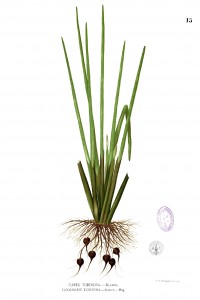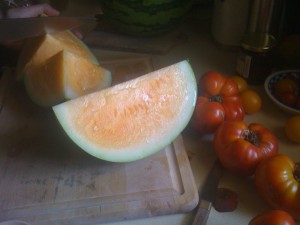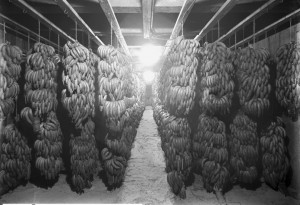The water chestnut is one of those foods I’ve eaten my whole life without knowing anything more about it than flavor and appearance (and that only because it so often shows up in frozen vegetable mixes).
The scientific name for the Water Chestnut is Eleocharis dulcis, and it’s often classified as a sedge.* It’s also a quite awesome plant. Consider:
- The visible parts of a water chestnut plant are leafless stems that perform photosynthesis. (The water chestnut has almost completely abandoned leaves!)
- The edible part of the plant is a botanical structure called a corm** which is a modified underground stem used by a plant to store energy (water chestnut plants are very much about stems). Not to be confused with bulbs like those of onions and garlic, which can look similar, but are instead made up mostly of leaves
- The reason water chestnuts remain so crunchy after cooking is that their cell walls are reinforced by special phenolic compounds, the same class of molecules as capsaicin, the molecule that makes chilli peppers spicy.
The genus Eleocharis also contains species like Eleocharis vivapara which switch between C3 and C4 forms of photosynthesis depending on whether they’re grown on dry land or in swamps. The relative advantages and costs of these two different forms of photosynthesis are worth a post on their own, but I’d always assumed it was an either/or choice and didn’t realize ANY plant species could pick to use whichever system was best suited to the local environment.[citation]
Domestication: (more…)



